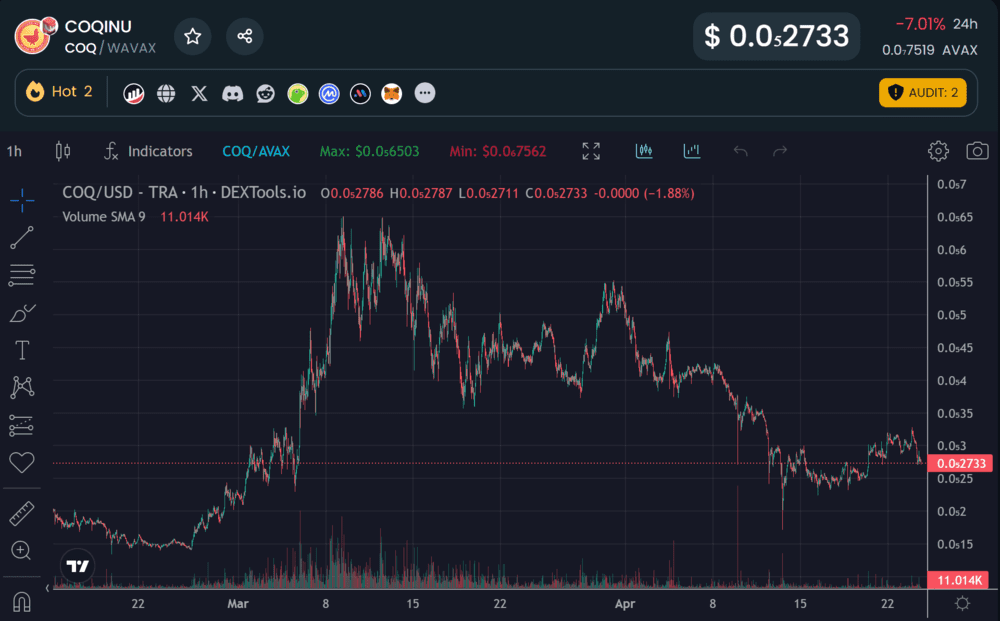Yield Farming: What Is This DeFi Investment Strategy?

Yield farming is the practice of lending or staking your crypto assets on a DeFi (Decentralized Finance) platform in exchange for interest-based rewards. Similar to having an Individual Savings Account (ISA), yield farming sees dormant crypto lent out via DeFi protocols, for either a fixed or variable rate of return.
The funds that have been lent out will be used to provide liquidity to the decentralized applications (dApp), helping to facilitate transactions on these platforms. Currently, DeFi yield farming can only be done on the Ethereum network using ERC-20 tokens.
What is Yield Farming in Crypto?
Let’s break this down further, what is yield farming? Yield farming is the crypto alternative to having a FIAT savings account. It enables holders of cryptocurrencies to lend their otherwise dormant coins or tokens to dApps such as Decentralized Exchanges (DEXs), lending, or trading pools, to provide liquidity. In turn, lenders become liquidity providers (LPs) and receive a yield in return.
Returns or rewards usually come in the form of an annual percentage yield (APY), based on the rate offered by the borrower. Naturally, this means that the more you deposit into a liquidity pool, the more you stand to receive as a reward. Many see yield farming crypto as much more lucrative than the interest received for holding a savings account with a bank.
This is due to the high-risk and volatile nature of crypto, enabling yield farmers to earn higher APYs. During the last bull run back in 2020, yield farming was extremely popular in the space, as a result of an excess amount of liquidity in the market. However, this has dried up in the past few years, with crypto prices down, and central banks hiking rates to historic highs. As such, investors have slowly fled back to Centralized Finance (CeFi) for a less volatile option for obtaining interest.

There has been so much negative press in the community surrounding yield farming, with Ethereum founder Vitalin Buterin responding to the above tweet, stating, “I personally am steering clear of the yield farming space completely until it settles down into something more sustainable. But I’m not particularly a “smart mind in DeFi” so….”
How Does DeFi Yield Farming Work?
So exactly how does yield farming work? Unlike Centralized Exchanges (CEX) that have a pool of liquidity, DEX and other dApps need the community to provide liquidity to ensure there are always buyers and sellers. As such, yield farming was birthed to reward those who lend their crypto to these platforms.
Here is a step-by-step guide on how this process currently works:
- Firstly, to become a liquidity provider you need to find a crypto wallet or DEX platform such as Aave which is a leading Open Source Protocol.
- Once on the platform, you can select the liquidity section for liquidity providers, and you will be able to view lending options.
- The next step will be to select which assets or tokens you want to deposit. Tokens that require liquidity come in pairs, so you must deposit both, for example, BNB/ETH.
- After you have deposited both into the pool, you will receive a liquidity provider (LP) token, which will be entered into the “farm”, with rewards issued periodically at the APY.
Pros and Cons of Yield Farms
There are several pros and cons when it comes to yield farming, similar to any form of reward-based system. As mentioned earlier, although rewards gained can be higher than interests from traditional FIAT saving accounts, the risks associated with this are also higher due to the volatile nature of crypto. Let’s explore these in more detail.
Advantages of Yield Farming
- Additional income – There are good possibilities to earn some passive income through yield farming, especially depending on the amount you invest. It is a great way to deploy your otherwise dormant coins and tokens.
- High percentage yields – Unike with trading interest rate-based bank accounts, or even staking crypto, the annual percentage yield (APY) with yield farming at projects like Bitcoin Minetrix offers yields as high as 195%.
- Helps power the DeFi ecosystem – Beyond the individual benefit to the lender, yield farming helps provide liquidity to DeFi exchanges and enables sellers to find buyers and vice versa. This is crucial to the overall operation of such dApp providers and users.
The Risks and Drawbacks
- Risks of Smart Contracts – DeFi protocols and yield farming are done with the use of smart contracts, which govern the terms and conditions of the transactions. These contracts can be susceptible to hacks, which could endanger the crypto provided by the liquidity provider or lender.
- Market volatility – Due to cryptocurrencies being a highly volatile market, the value of lent crypto could drastically fluctuate at any point, potentially causing the lender to lose money. To protect yourself against this, the use of stablecoins like USDT or TUSD could be advantageous.
- Fraudulent projects – Like with any promising financial instrument, the risks of fraudsters attempting to rip up investors are present in yield farming. Some projects may market themselves using the APY and promise huge rates, without having any underlying offering, or ecosystem behind that.
What Does APY Mean in Crypto Farming?
As briefly mentioned above the APY is often used as a way of attracting budding farmers to lend their crypto in the promise of great returns. However, what exactly is the APY? Known as an Annual Percentage Yield, the APY is the rate of interest or reward that a lender will receive for providing liquidity into a dApp.
This APY is locked into the smart contract with liquidity providers receiving real-time income based on the rate at which they have agreed to lend. As a result of the APY being dependent on the value of the crypto lent to the borrower, some experienced traders use a strategy where they switch the tokens, to one which may magnify in value, thus generating higher yields as a result.
Such a strategy requires a high level of expertise, and may not be suitable for beginners, as it could result in a significant loss of crypto.
Is Yield Farming Worth it?
Similar to staking, yield farming can provide participants with good, consistent, and passive income with crypto that would have otherwise been dormant. The benefits to the ecosystem are also high, in that lenders are effectively powering the wider DeFi network, as their tokens will be used to provide liquidity to both buyers and sellers.
This is key for decentralized applications, and those who use them, as it continues to uphold the ethos in which crypto was founded. However, with yield farming, there is also a significant risk of loss which needs to be appreciated.
The potential for high-reward can come at a considerable cost, as market volatility could lead to you losing your crypto tokens. Additionally, with several bad actors in the industry, it is important to do your due diligence when deciding what decentralized app or DEX to use for yield farming.
FAQs
What is yield farming in crypto?
Yield farming is when a holder of a crypto token or coin lends this to a decentralized application or exchange, in return for high-yielding interest rewards.
How much can you make yield farming?
This depends on the annual percentage yield being offered. Bitcoin Minetrix currently offers an APY of more than 195%.
How do you find crypto yield farms?
You can find them by researching the internet, or alternatively, we’ve done the heavy lifting for you, here is a list of the best yield farming crypto platforms in 2024.
References
- Returns of 70% being offered to Yield Farmers (Bloomberg)
- Yield Farming app secures $12 million in deposits in 2 weeks (CoinTelegraph)
- 25-year-old becomes a millionaire from Yield Farming (CNBC)
- DeFi deposits reach all-time highs on yield farming platforms (DeCrypt)
- Annual yields of 100%+ for yield farmers (Forbes)
About Cryptonews
At Cryptonews, we aim to provide a comprehensive and objective perspective on the cryptocurrency market, empowering our readers to make informed decisions in this ever-evolving landscape.
Our editorial team, comprised of more than 20 professionals in the crypto space, works diligently to uphold the highest standards of journalism and ethics. We follow strict editorial guidelines to ensure the integrity and credibility of our content.
Whether you’re seeking breaking news, expert opinions, educational resources, or market insights, Cryptonews.com is your go-to destination for all things crypto since 2017.


 Michael Graw
Michael Graw 


 Eric Huffman
Eric Huffman